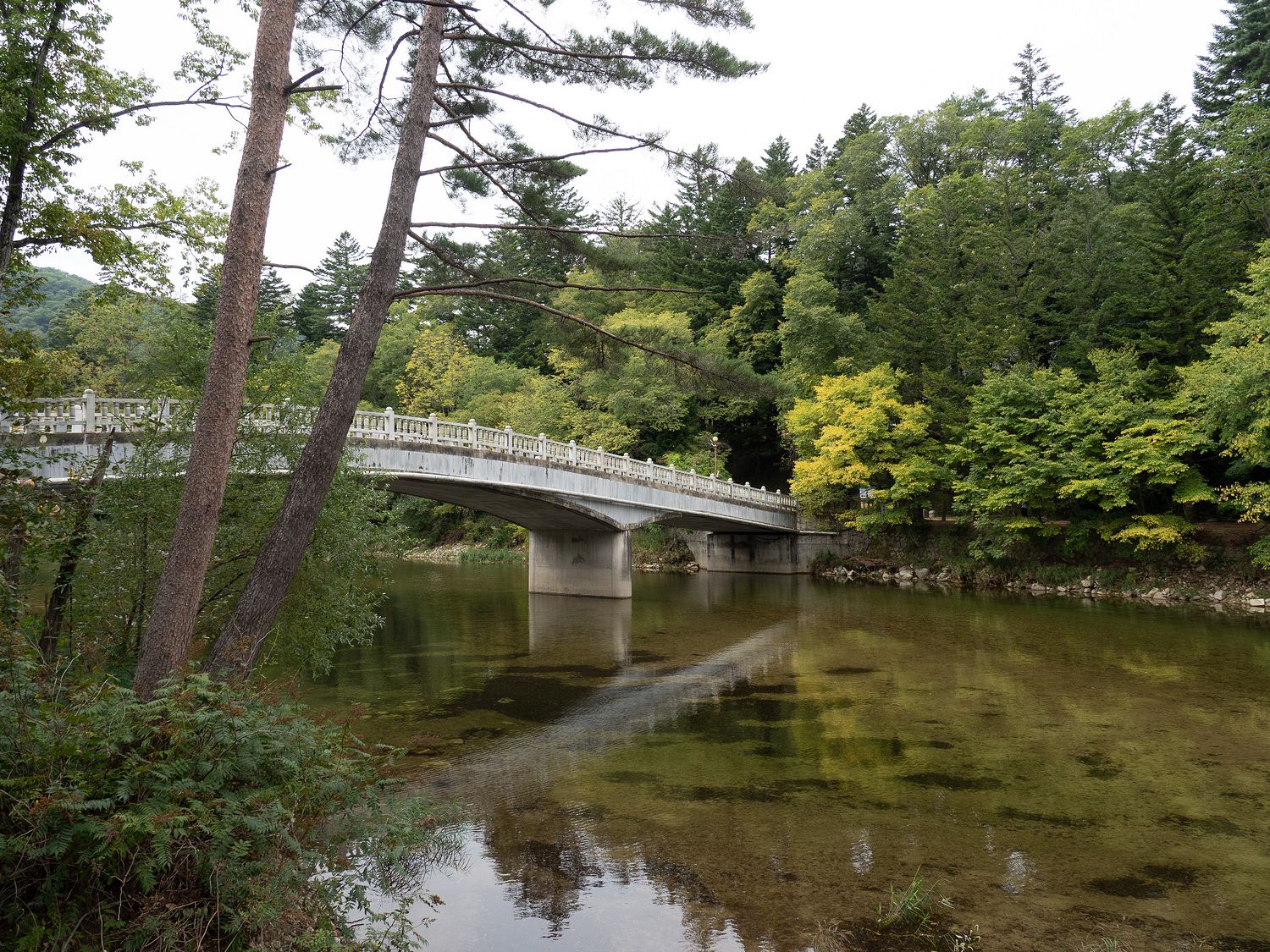– Denton, Texas to Seoul, South Korea to Sokcho, South Korea –
Hello from South Korea! This first post is going to be a little interesting, because of the way I’ve decided to format things first. This is the Day One post, but today is Friday, and our trip technically started early on Wednesday morning, back home in Texas. So, if you’ll bear with me, I will describe how we got here before I dive into the first real day of our trip.
So, as I said, we got up at about 4am in Texas on Wednesday morning and drove to DFW. We made it to the airport by 6am, and our first flight took us to Minneapolis, and it left just after 8am. We ended up flying Delta this time, which is out of character for us. We almost always fly American. Unfortunately, tickets on American from DFW to Seoul were almost $600 more than flights that stopped in Minneapolis first on Delta airlines, so in the end, we decided it wasn’t worth the extra money.
In Minneapolis, we had lunch at Qdoba and hung out for about a four hour layover. It wasn’t too bad, but when you’re already traveling for almost 24 hours anyway, time sure does start to add up. Our plane to Seoul (which they only began offering in April of this year) left a little late, and it seemed quite full. Only a handful of seats were empty, though two of them were in the row right behind us. There was a single woman in that row of three, and I think she enjoyed all of her extra space immensely.
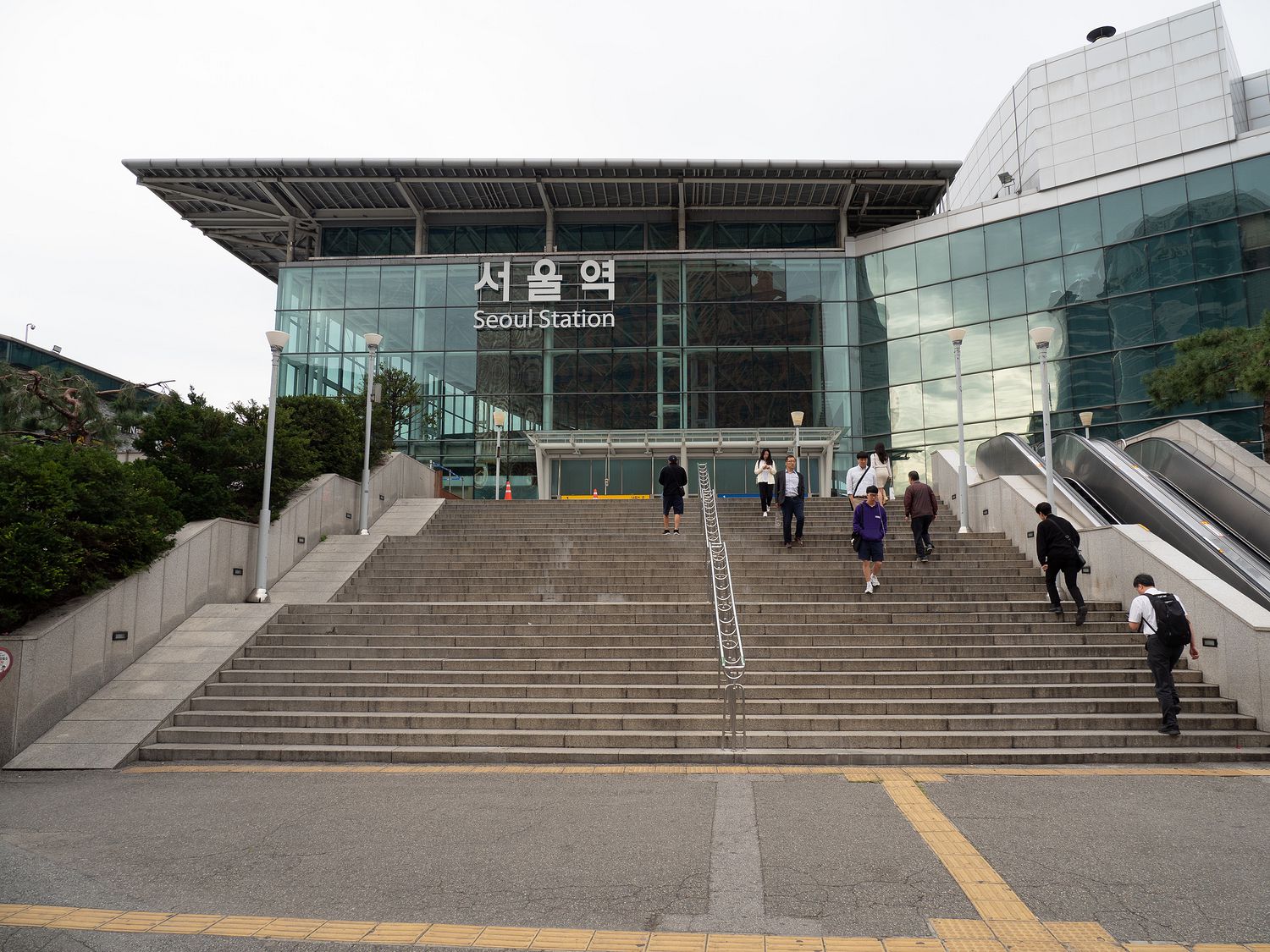
The flight officially took just under 13 hours, and by the end of it, I was a little sick. We did a lot of weird maneuvering as we went over China and flew around North Korea, which I do not think helped with my health. The plane food didn’t help me either. There’s something awful about the smell of plane food most of the time. Eugh. Anyway, we finally landed in Seoul around 5:30pm on Thursday evening. Seoul is about 14 hours ahead of Dallas, so it would’ve been about 3:30am on Thursday back home. Basically what I’m saying is, we were zombies.
At the airport, we picked up our bags and got our bearings before heading down to the airport subway station, where we took the express train (which doesn’t make any local stops) to Seoul Station. Unfortunately, our train didn’t leave until 6:40, and our trip took an hour, so it was 7:40 or so when we finally made it to the station. Lucky for us, we had picked out a hotel right near the station to stay for the night, so we left the station and walked over to our little hotel for the evening without dying or passing out on the way.
Our room was small and a little weirdly shaped, but we were too tired to care. We showered, brushed our teeth, and collapsed into bed before 8:30pm, completely skipping dinner and anything else. Honestly, we were so tired I’m half surprised we managed the shower. It was a really long day. Neither of us really slept on the plane, either, so it isn’t surprising we couldn’t hold our eyes open.
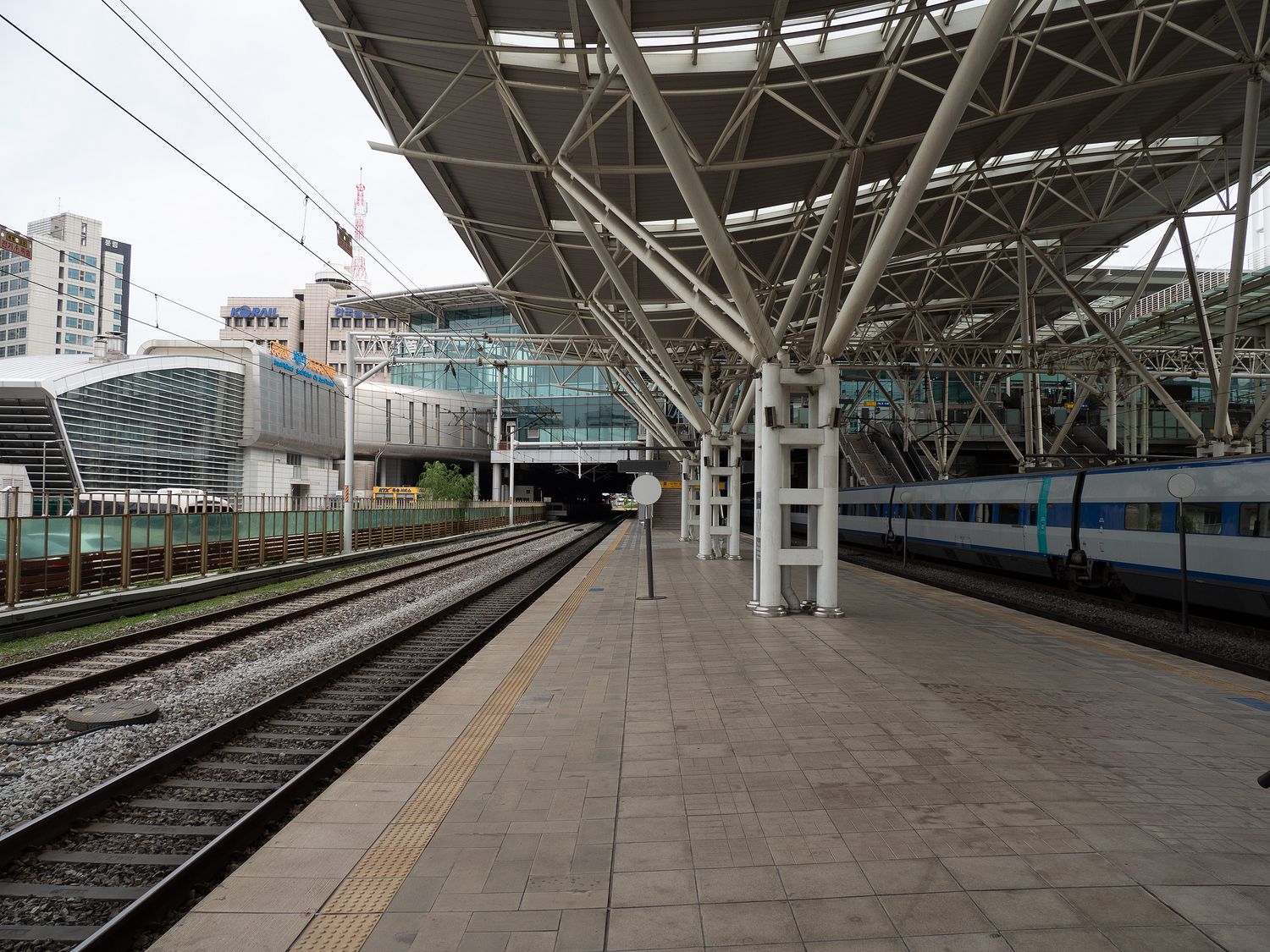
Now we arrive at what I’ve decided to consider the real Day One of the South Korea trip: the first day we actually got to do anything. So, I’ve described how we got to South Korea, but not why we are here: Mark has a work meeting part of next week, so we came a little early to go to a couple of national parks and then we will stay a couple of days after to see Seoul, which is the 5th largest city in the world. Pretty cool, right?
Today, we got up at 6:00am, though we had set our alarms for 6:30. It’s a little funny how your internal clock can get so messed up from travel. At least we had plenty of sleep, though I still ended up being quite tired by the end of the day. So, we showered, dressed, and repacked our bags. We left our hotel just after 7:45am and made our way back over to Seoul Station to grab a train to Gangneung, which is the closest major city to the parks we are visiting. We were buying our tickets by 8am, and since our train didn’t leave until 9, we had some time to look around and pick up some breakfast.
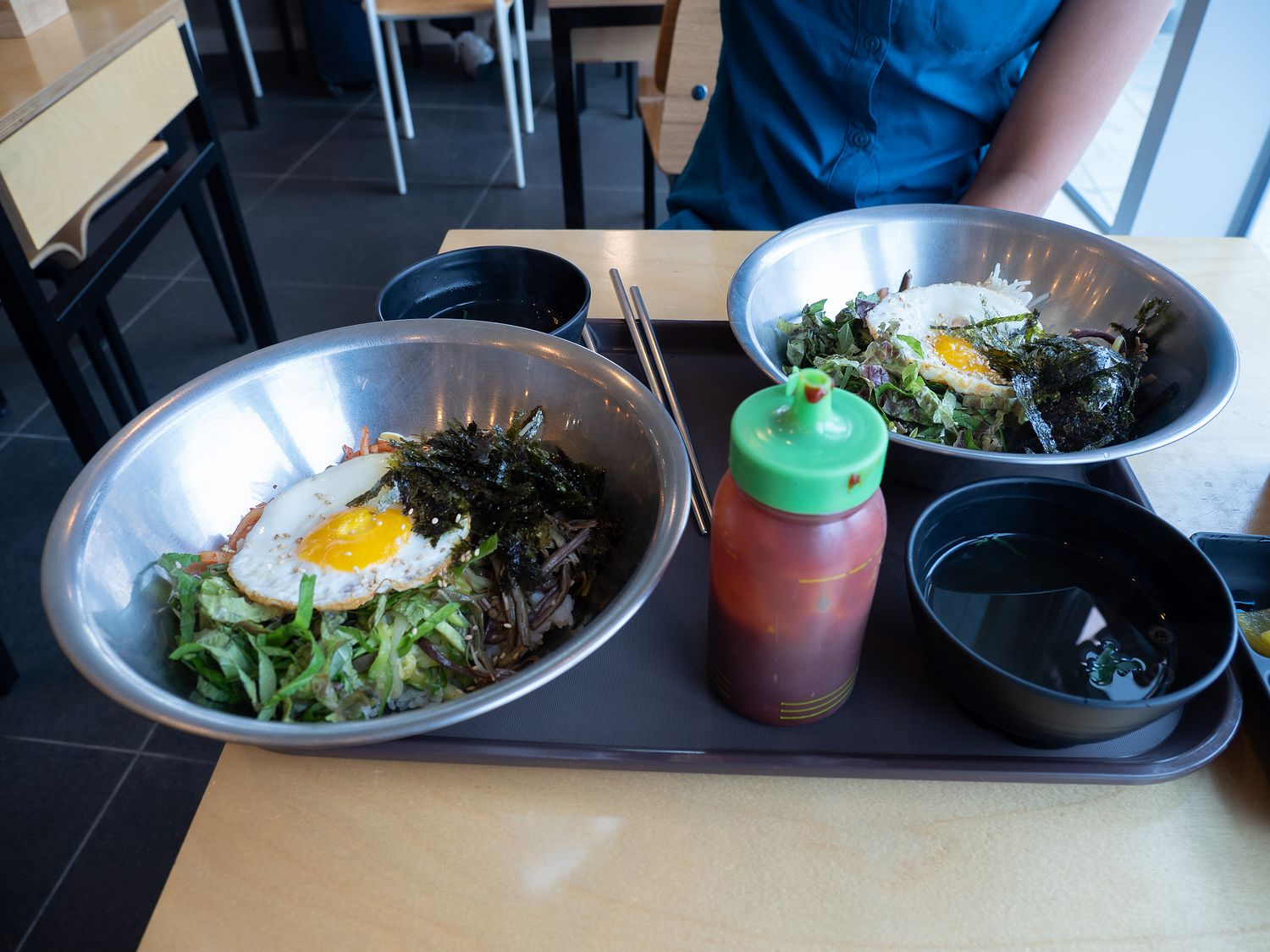
Seoul Station is a lot like an airport, with tons of little shops and restaurants inside. We ended up at a Paris Baguette, which is basically a French-style coffee and bread shop. We weren’t quite ready to be adventurous with our food yet, so that seemed like our best bet. Many South Koreans eat the same things that they eat for dinner for their breakfast, though Western-style breakfasts are relatively popular as well. The train station had a Dunkin Donuts, so it wasn’t like we had to work too hard to be conservative in our food options. We had juice and pastries for breakfast, and Mark had a coffee.
Our train left almost precisely on time, and we had assigned seats in car number one. We had assumed that would be the first car in the train, but it turned out to be the last. When the train arrived from the opposite direction, the train attendants locked the train doors after the previous occupants exited, then flipped the seats around to face the other way, so that the seats would be facing the direction the train was moving. I guess that beats trying to turn a train around. It was a little warm on the train as well, but nothing unbearable. I wonder if it had anything to do with how far back in the train we were. We might find out on our trip back to Seoul.
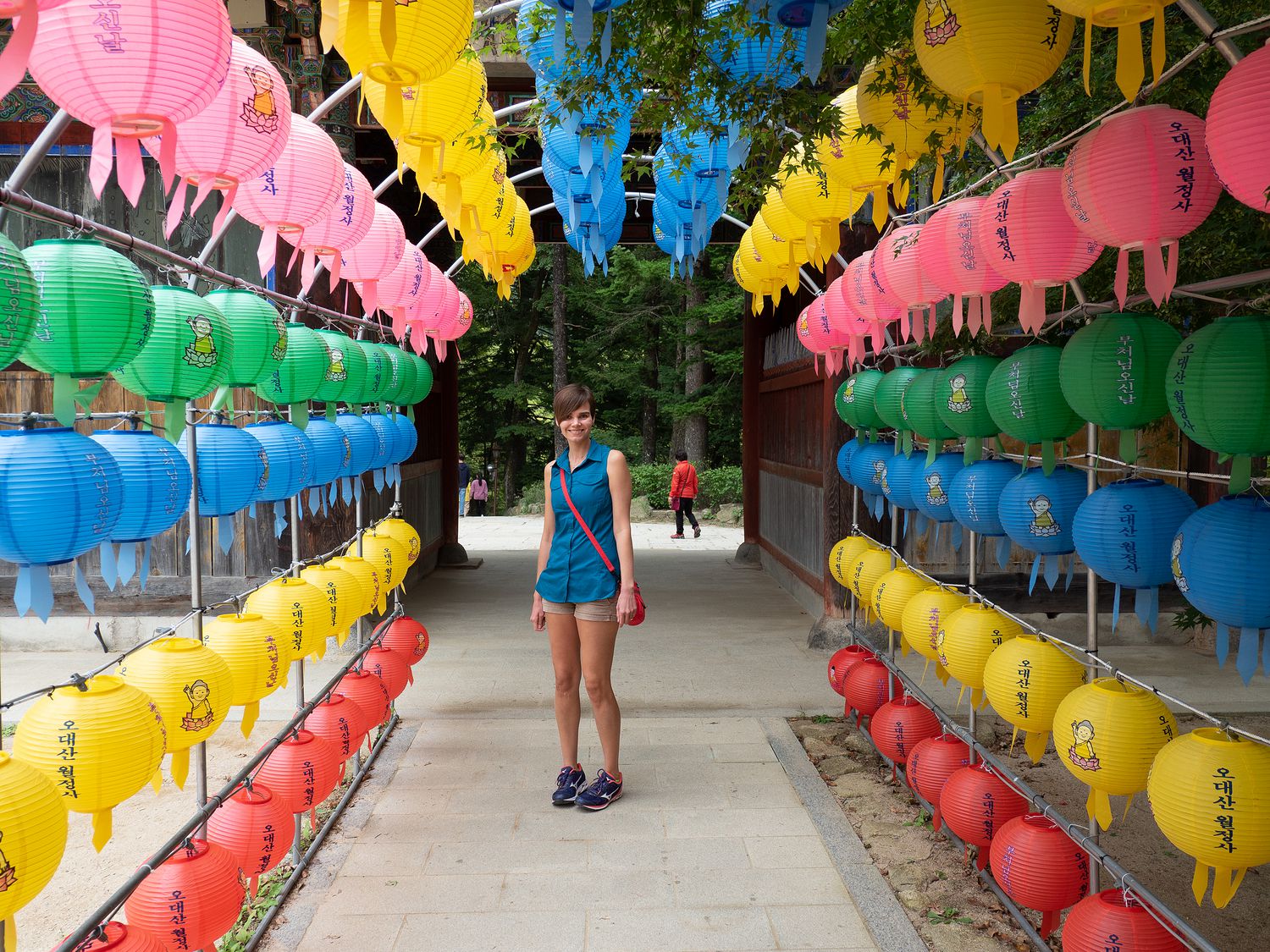
The trip to Gangneung takes almost 2 hours, and while the first part is heavily populated, the last section becomes more rural, and the scenery is lovely on the trip. Seoul is on the opposite coast from Gangneung, which is on the Sea of Japan. Our hotel for tonight and tomorrow night is in Sokcho, which is about an hour up the coast from Gangneung. Since we wanted to visit two national parks over here with as much freedom as we could manage, we decided to rent a car to drive around for the weekend. If you plan to do the same, you’ll need an International Driving Permit, which is easy enough to obtain, just a little weird. Make sure you have it before you leave the US. Google will tell you easily enough how to manage it.
Anyway, we picked up our rental car from Hertz right there in the Gangneung train station, and we also had our lunch there. We each had a bowl of mixed vegetable bibimbap, which consists of rice, vegetables, and a fried egg. Mark ate his well enough, but I am a wuss. The bibimbap had seaweed in it, which tasted too fishy for me, and I could barely get it down. Needless to say I ate less than half of my meal. I’ve already jokingly told Mark that I bet I lose weight on this trip.
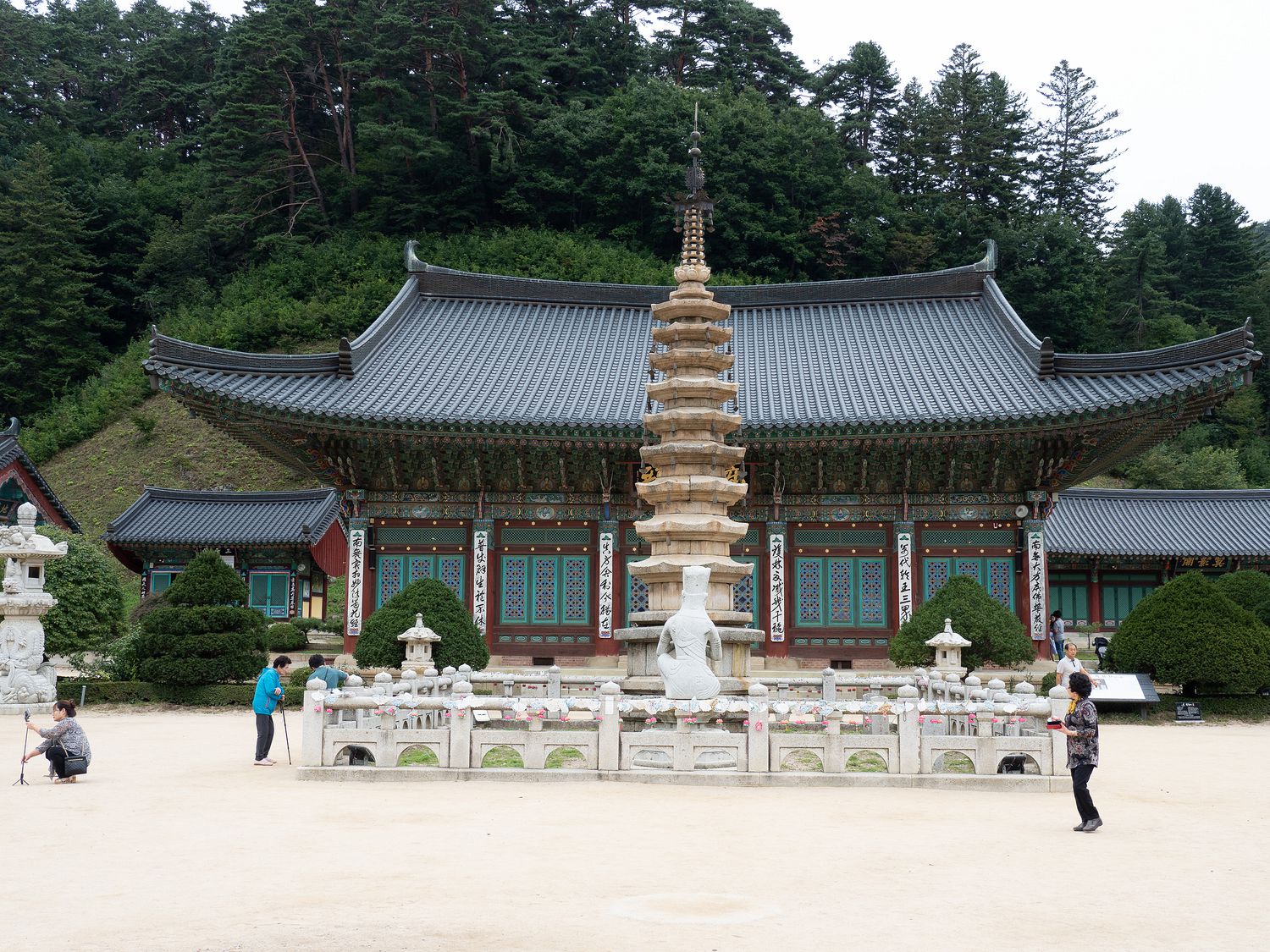
We also stopped by a convenience store to buy some drinks. It is surprisingly hard to find water fountains here, which is somewhat unexpected. We bought collapsible water bottles for this trip after discovering the need for that and our own travel silverware while on our trip to the Virgin Islands. Having to use or buy plastic just to eat and drink things is incredibly inconvenient. Luckily they have a ton of tea options here, so we were able to get two teas and a bottle of water for the road. Mark’s tea was only okay, but my hibiscus tea was heavenly. I bet I drink a lot of it while we are here.
Once we’d been adequately fed and watered, we climbed into our tiny white Kia, which is actually a sweet little car (unusual since we almost always rent the tiniest P.O.S. in the rental line up), and headed towards our national park of the day: Odaesan. The park is named after a large mountain at its center, but we spent most of our time in the park visiting temples.
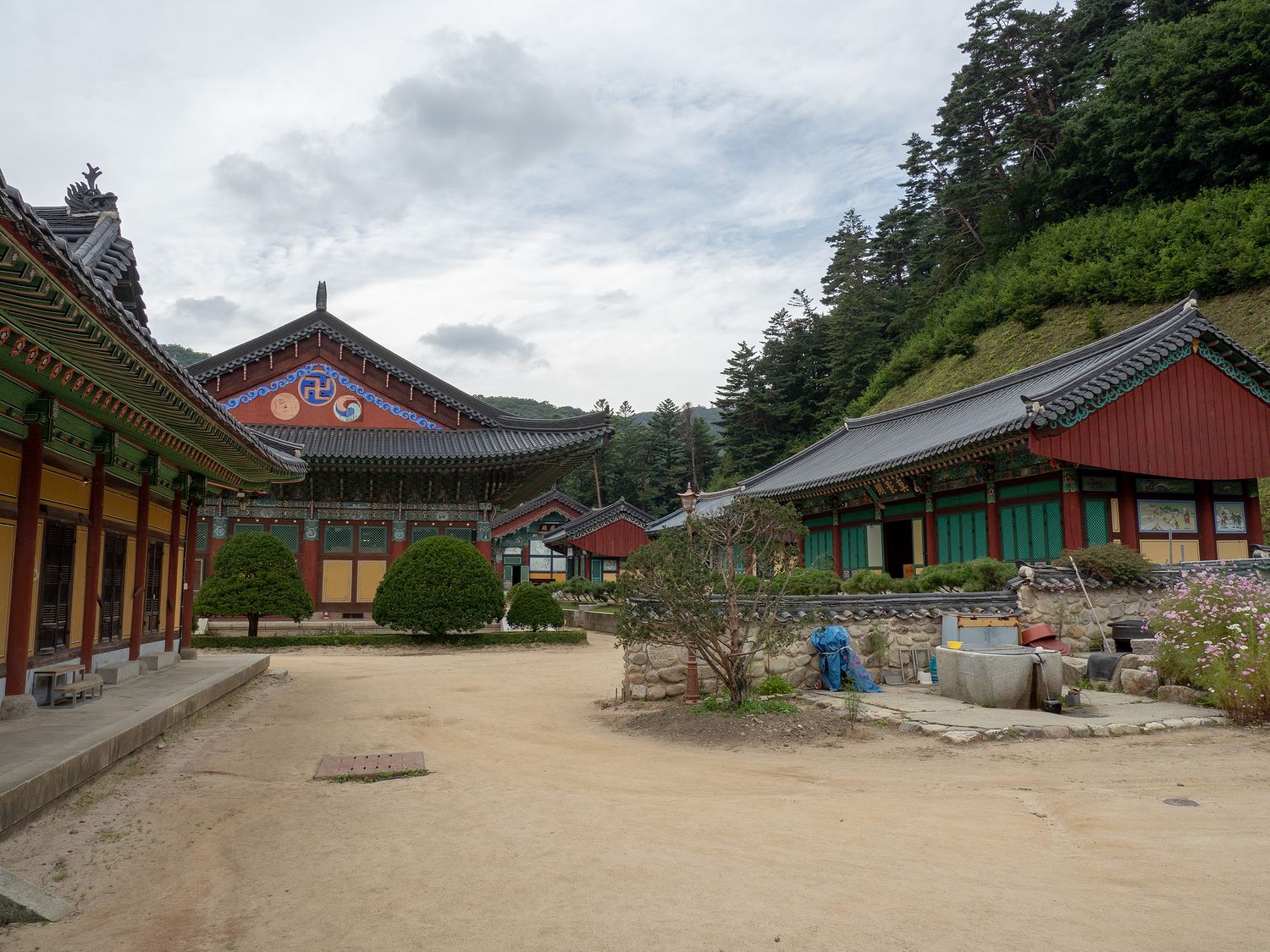
It takes about 45 minutes to drive from Gangneung back to Odeasan National Park, though it is somewhat difficult to navigate. Google Maps does not work in South Korea, and many of the map apps local to the area do not have the ability to cache maps the way Google does. Considering that is how we typically navigate foreign countries, we would’ve been in a bit of a pickle if it weren’t for the wonderful mapping system in our little car. The car comes with a very nice GPS-based map app, which at least helps you navigate the roads, even if it can’t quite map you to your final destination. Between that and the GPS working spottily in Google Maps, we were able to navigate much better than I was afraid we would, and we made it to the national park entrance with only a few minor mistakes.
We did see a ton of farms on the way to the park. We saw people out picking carrots, and fields full of many other different vegetables. We also spotted several agribusiness and veterinary schools along the way. I suspect this area of South Korea is sort of the nation’s bread basket. We really saw a ton of farms.
Anyway, back in Seoul, many of the signs were in English and Korean, especially in the airport. As we’ve ventured further afield, while the signs still frequently have English, it is much less common than it was. Many of the road signs, especially, are only in Korean, which can make you wonder what the caution signs and things are saying as you drive. We were a little confused upon our arrival in Odaesan, since we weren’t sure what the signs said or what we would be seeing when we arrived. We didn’t do nearly as much research on this park as we did on the major park, which we are visiting tomorrow. Really, we only visited Odaesan because of its proximity to the other park.
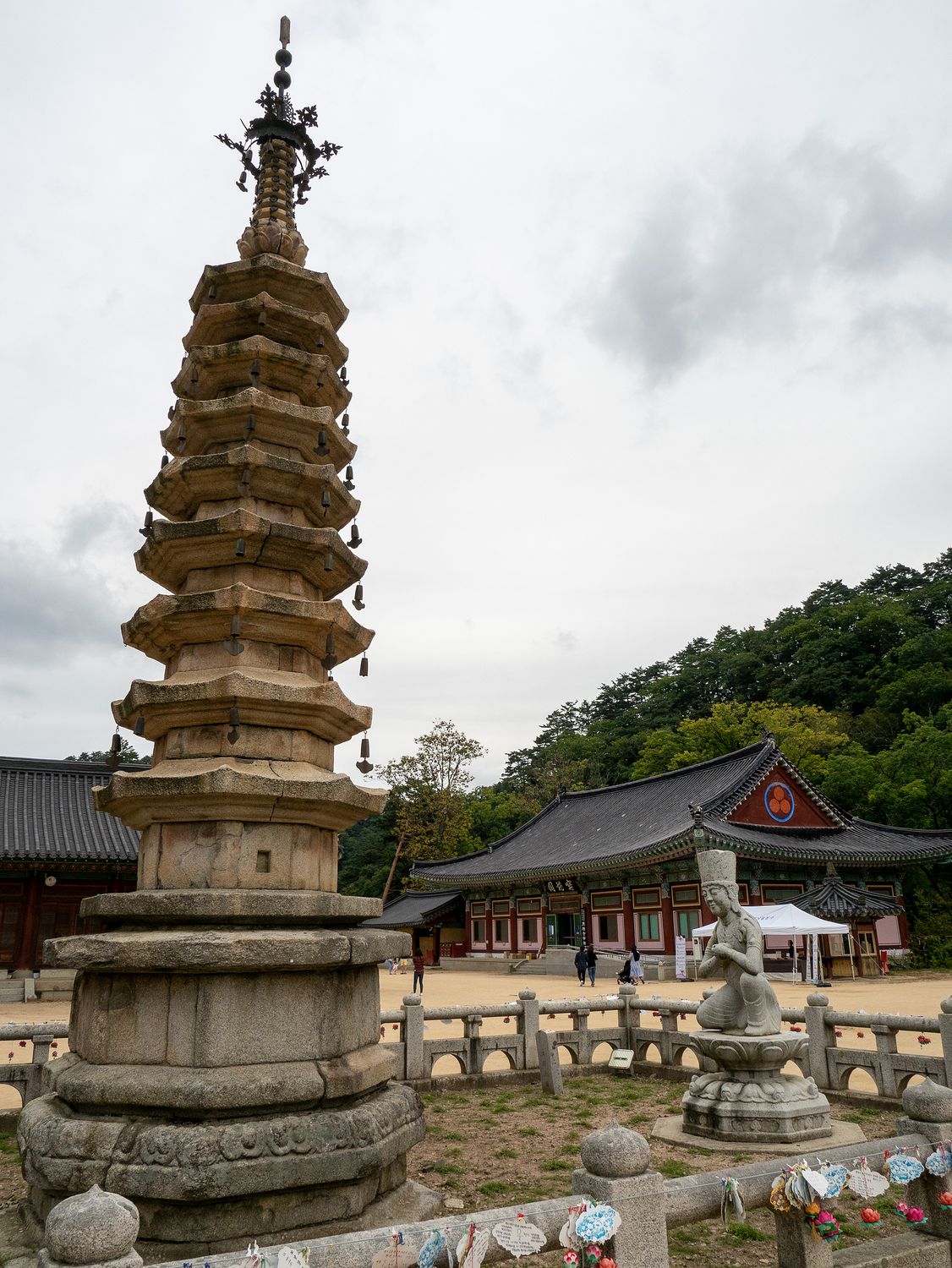
I am glad that we visited, though. The main road back into Odaesan (as opposed to the highway that just runs through it) takes you back to a temple complex, which was our first stop upon arrival. We’ve been to a Buddhist temple in Hawaii, but the temples here fell like something else entirely. They are large and very intricate, and seem to still house monks and the like, who we saw out going about their daily chores.
The paintings on the temple walls are amazingly detailed, and many of the buildings are in wonderful shape. The first temple we visited was Woljeongsa, which is quite easy to get to from them main parking lot for the park. The temples are tourist attractions, but they are also still working temples. Many of the other visitors to Woljeongsa were lighting incense and bowing at the altars inside. We chose to stay outside, as we weren’t sure what was appropriate behavior for visiting the actual temple buildings, and we didn’t want to be disrespectful.
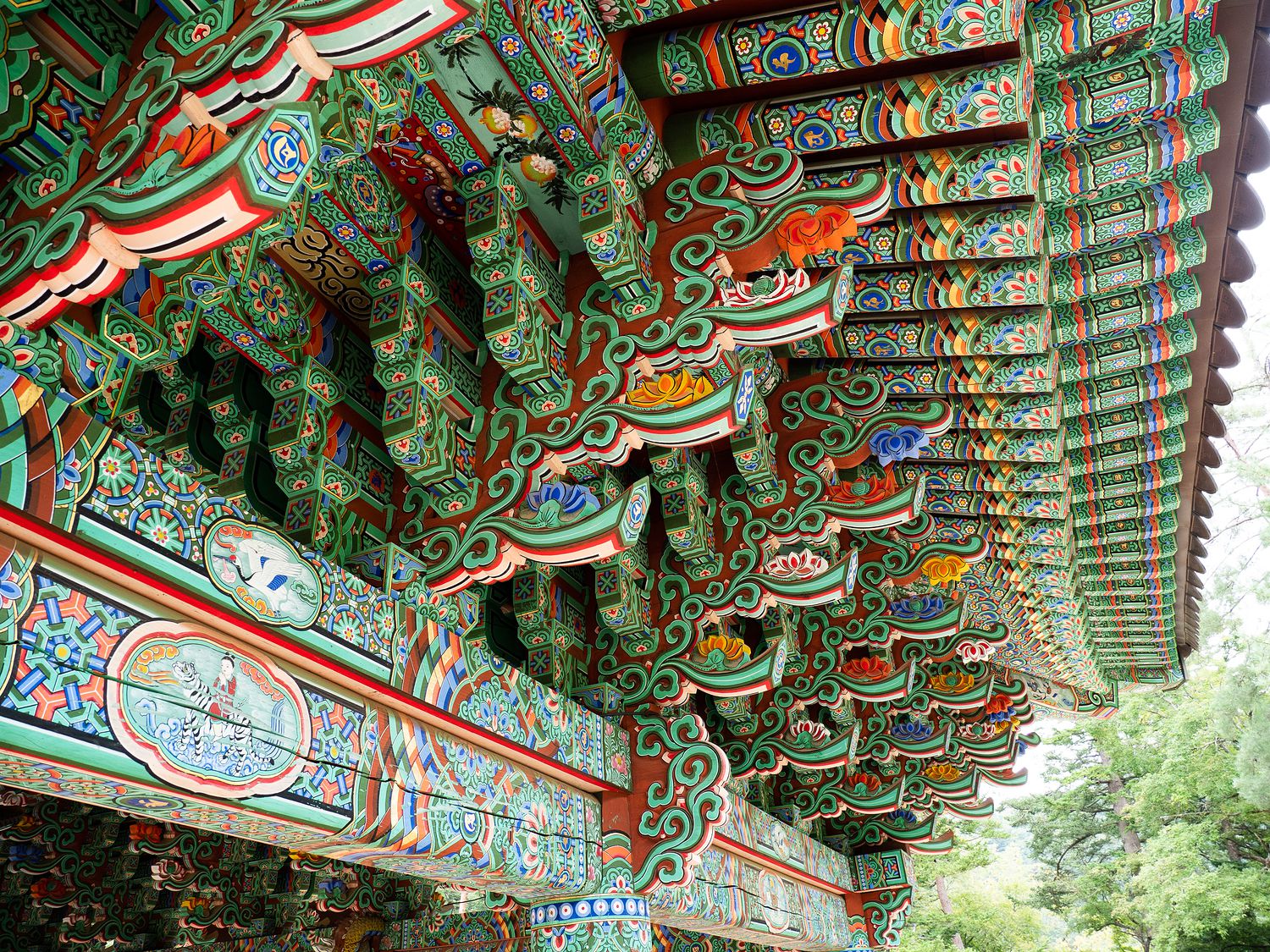
The outer buildings were just as beautiful, regardless, and we really only missed seeing the statues of the Buddha inside the temples by not going inside. I think one of my favorite things at Woljeongsa was the lantern walkway, which was basically a path lined by a metal frame, which was home to dozens of brightly colored lanterns. The little tails on the lanterns fluttered in the breeze, and it was quite fun to walk through and watch them move. I enjoyed it immensely.
Another favorite at Woljeongsa was the object in the photo below, though I honestly have no idea what it is called or what purpose it might serve. The little cards hanging from the contraption are prayer cards, which you can see more of on the structure behind it, as well. In any event, the thing rotates around a central axis, and visitors can push it around using the long wooden handles on either side. We saw several groups of people spinning it, though we did not take part. Isn’t it gorgeous?
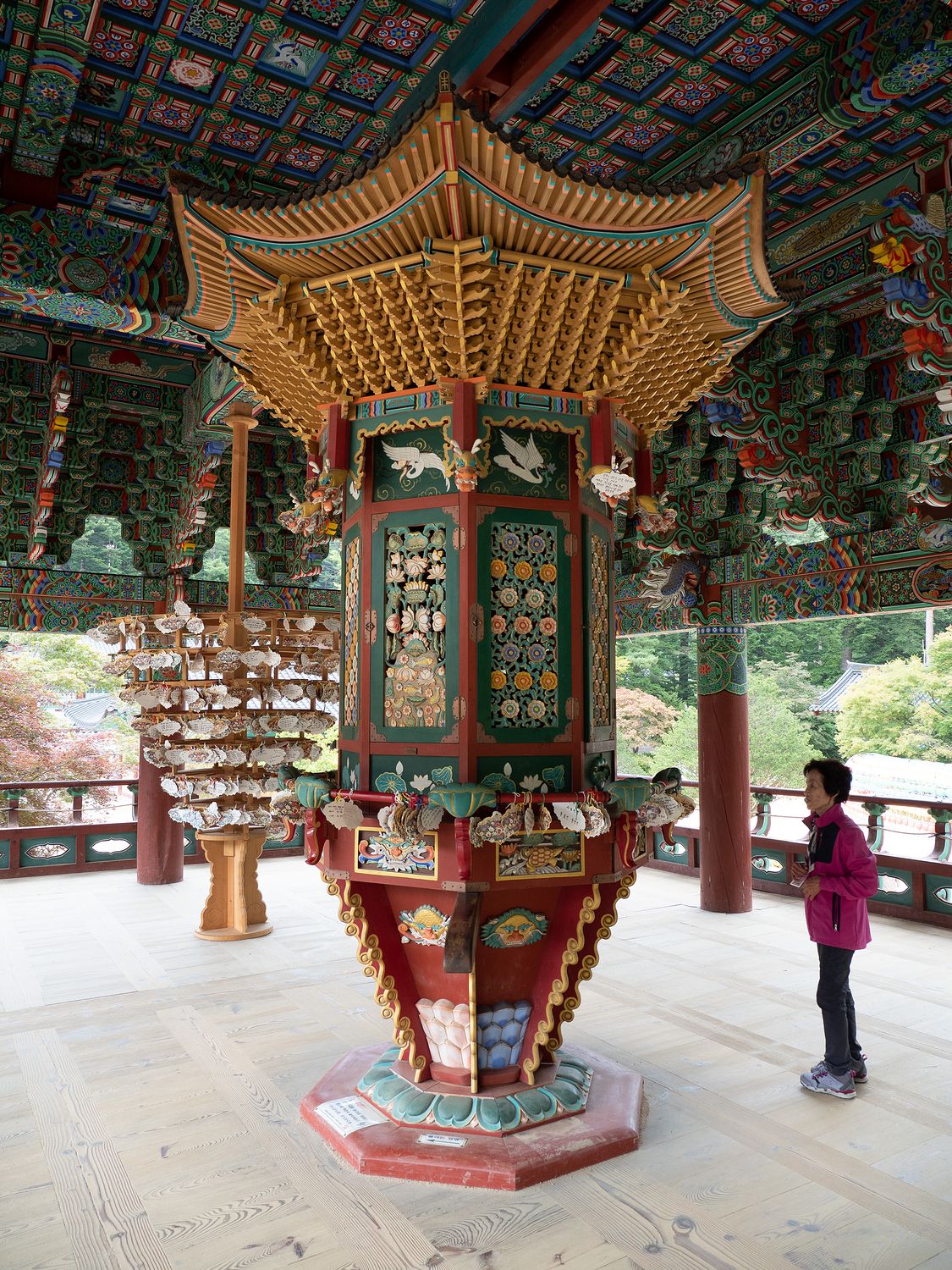
In fact, pretty much everything on the temple grounds is gorgeous and incredibly detailed, which makes me wonder exactly how old the current layer of paint on the buidlings is, and how often it must be repainted to keep everything looking so wonderful. Do you think they hire an artist, or is the painting a job that would fall to the monk? Unfortunately, even if there were signs that might’ve told us these things, they were in Korean, and we couldn’t interpret them.
Several of the temples we’ve seen seem to have accommodation options, which are marked as “templestay” in English. It seems like you can rent a room in the temple and stay for a few days. I wonder what something like that would be like. I can tell from the look of the rooms that you would likely be sleeping on a mat on the floor. That sounds… interesting… I guess.
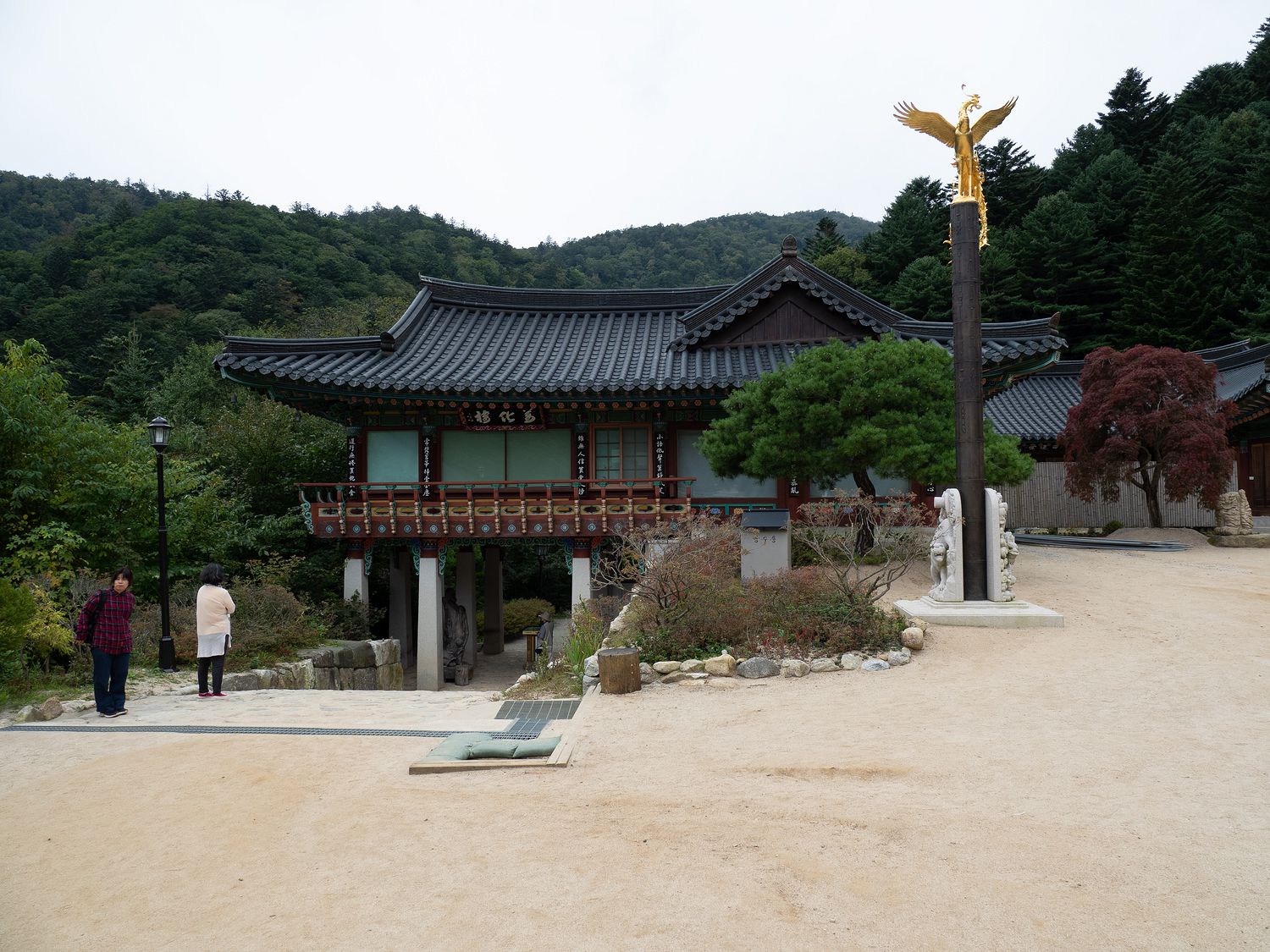
Further back from the first temple was a series of bridges, temple buildings, and other sights along a 10km walking path. There was also a gravel road that went back to the other large temple in the area, and since we did not have time to walk the whole 10km to see everything, we decided to drive back to the second large temple and visit that one, at least.
The second temple we visited, Sangwansa, was at the top of a hill. We drove the 10km back to the temple, parked, and walked about half a kilometer up a hill and about 200 stairs to visit this second temple. At the top, we realized we could have taken a longer, less steep walk up, but I guess I’m proud we took the stairs. It was a pretty good climb, and I imagine that climbing stairs to get to the place is a much more authentic experience than walking up the little road that winds around the back for delivery vehicles.
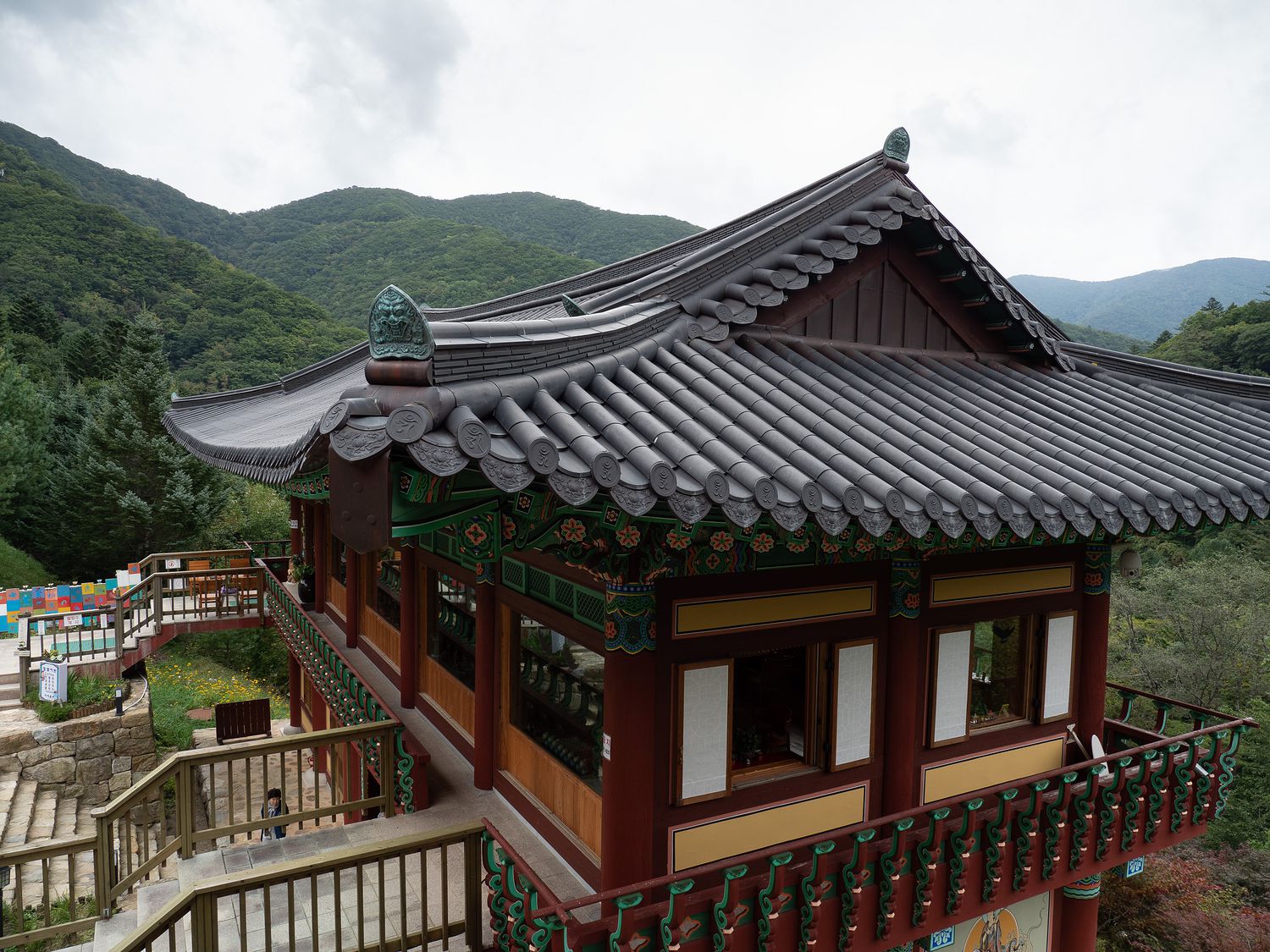
Sangwansa had a singer or chanter active when we arrived, and he intoned the same message over and over again while we walked around the temple grounds. I can’t say that I know what he was saying, or what language he was even chanting in (modern Korean? old Korean? Maybe even Chinese?), but the tone of it is very soothing and feels entirely appropriate, given the mountainous surroundings and the ancient-looking temples. It was an experience I thoroughly enjoyed.
After finishing our tour of Sangwansa, we took our little car back down the dirt road and off of the little park road, out to the main road that goes north through the park. Since there were homes and farms along the road, it is clear that South Korea doesn’t do national parks quite the same way we do back in the US. You almost never see houses in national parks at home, but here it seems common.
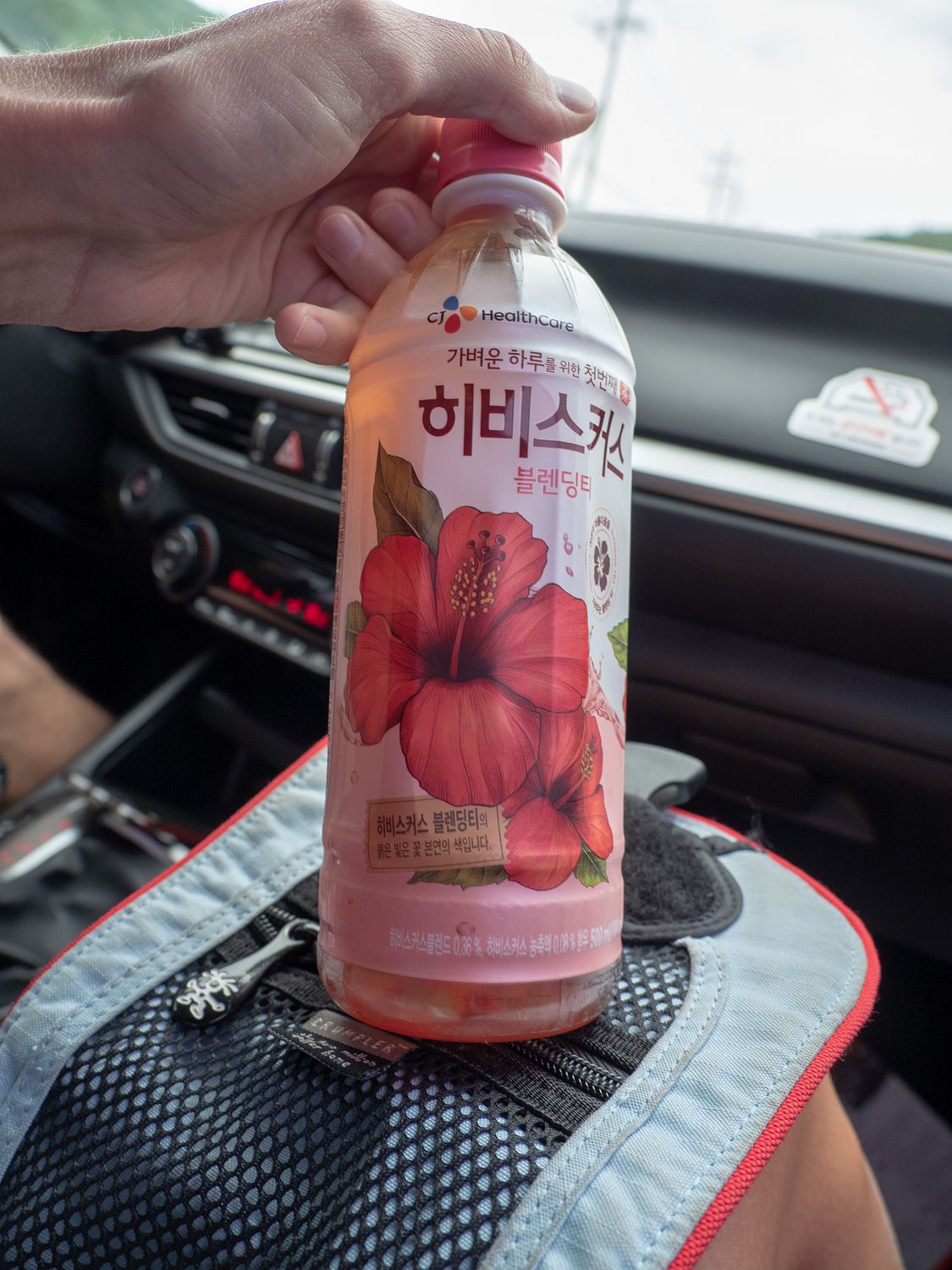
After leaving the park, we drove across to highway 7, which runs along the Sea of Japan and north to our hotel for the night in Sokcho. It took about an hour to complete the drive. Along the way, we stopped for more drinks. I had another hibiscus tea. Mark got a strange tea that he didn’t drink yet, so we will have to see if he ends up liking it. The picture on the front seems to be related to “pine berries,” whatever that is.
Finally in Sokcho, we checked into our hotel, which is a massive Ramada Inn right on the water. The thing has 20 stories, and we are on the 14th. Our view out over the water is lovely, and you can look back at the mountains in the distance. I honestly can’t believe this place was within our hotel budget, given the fact that we are usually very careful with how much we spend per night for a hotel. My only guess is that we are visiting in the off season. It isn’t beach weather any more.
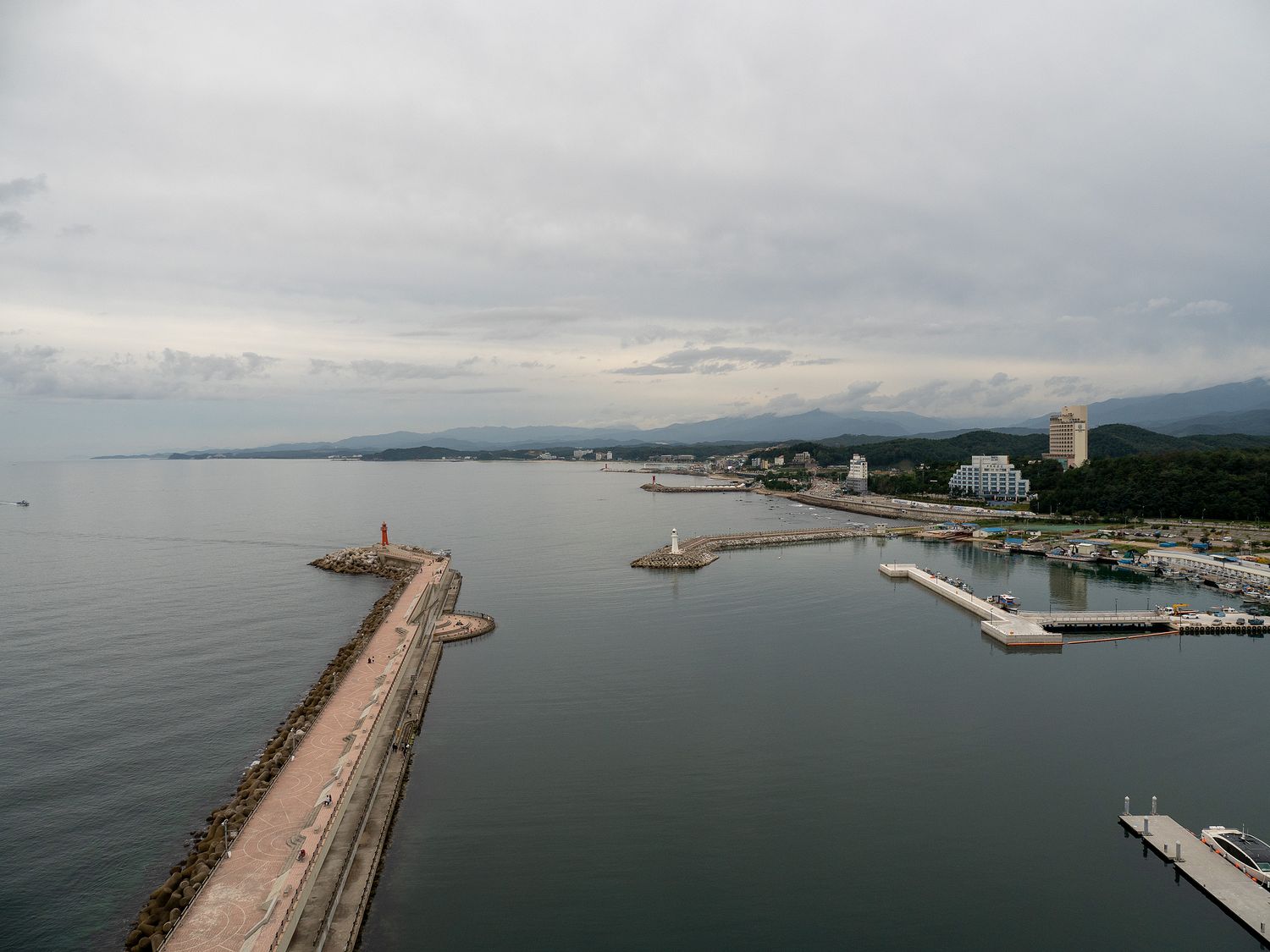
Since we had seen so many restaurants right in our neighborhood on our drive in, after we had unloaded the car, we wandered out onto the local streets to look for our dinner. Unfortunately, we were met with some difficulties. You see, we are right on the ocean. In fact, the fisherman fish from the pier right in front of our hotel, and you can watch tons of little fishing boats darting around in the small bay in front of us. That’s what they are cooking at all of those restaurants: seafood.
On our walk, we saw probably 50 restaurants, and all of them were tiny seafood shops. In fact, many of them have the fish out front, tables in the middle, and an itty bitty kitchen in the back. So, at the front of the restaurant, you choose the still-thrashing living creature you want to eat, then they take it to the back, cook it, and you eat it a little table in the middle. I kid you not, there are a ton of these tiny shops here. If you actually like seafood, I can’t even imagine how you choose which one to visit.
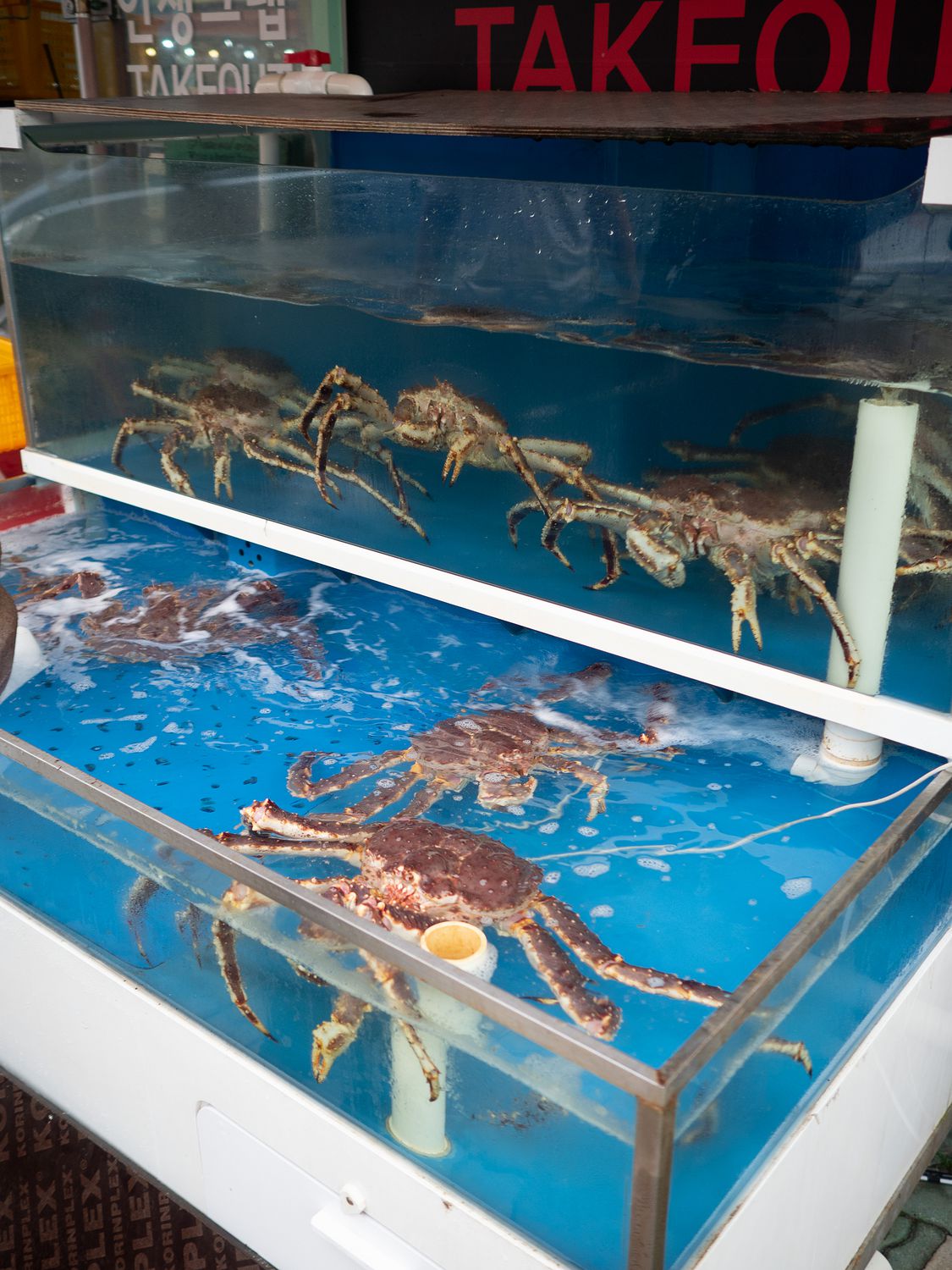
After half an hour of looking and finding only fish for dinner, Mark and I gave up and went to the grocery store to find something to eat. Unfortunately, the grocery store was tiny, and we only really managed some tiny pieces of strange cheese, some pineapple, and some yogurt, there. There was another Paris Baguette in our neighborhood, so we went in there to get a little bread to go with dinner.
With our spoils in tow, we walked back to our hotel to eat, where we discovered that pretty much everything we bought was way too sweet. Our yogurt tasted like candy. Our breads (one was cornbread, and the other olive) were sickeningly sugary, and even my tomato juice tasted like the weirdest candy you’ve ever imagined. I guess every non-meat food here is required to taste like they dumped an entire bowl of sugar in it. I don’t know if I’m going to survive much more “eating” here. I had to throw my juice away. Even Mark wouldn’t drink it, and he has an iron stomach.
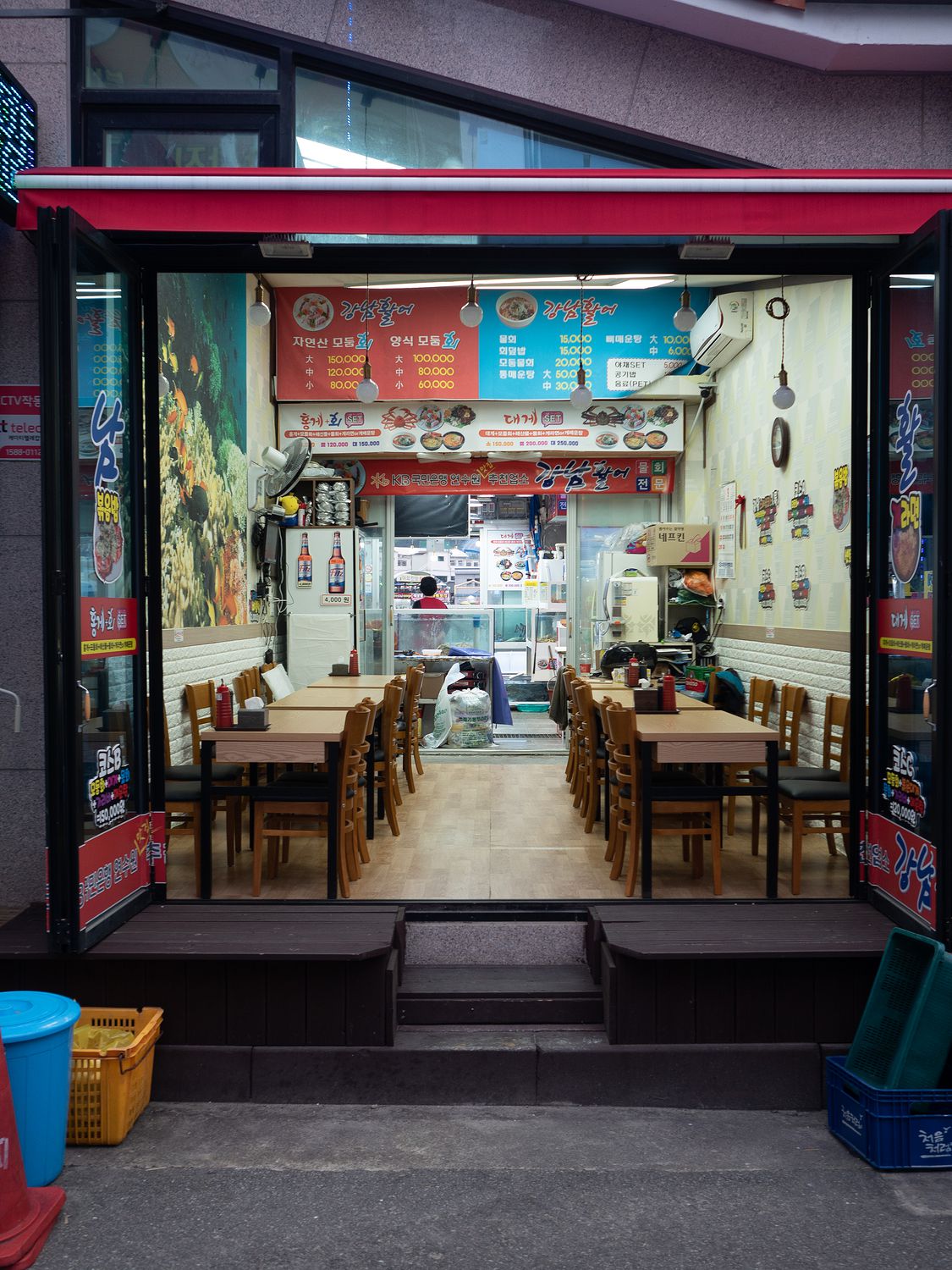
Tomorrow, we are going to run from lighthouse to lighthouse here in our neighborhood, then head out to Seoraksan National Park, which is the big park we came out here for. I’m not sure how much of it we will see tomorrow, but we are also in this area for part of Sunday, since we don’t have to turn in our car until 3pm that day. I think we will see as much as we can tomorrow, then pick up any slack on Sunday morning. I think there’s a cable car in my future for tomorrow, which means you’ll probably get to read a little bit of whining on my part about heights. I am still exited, though.
